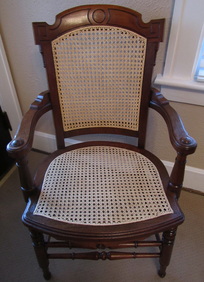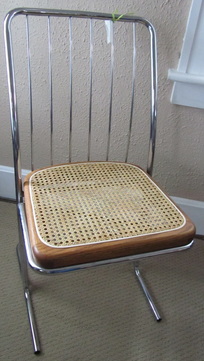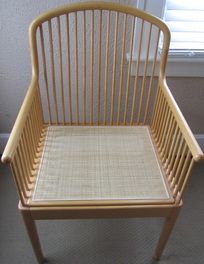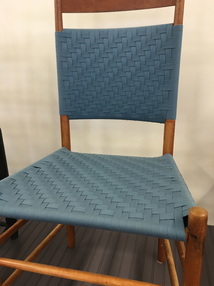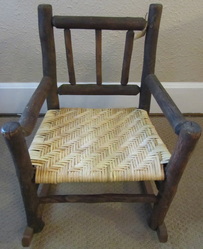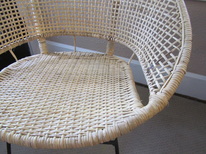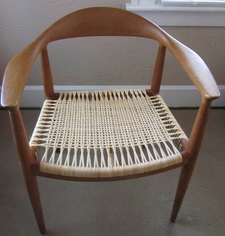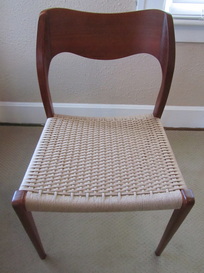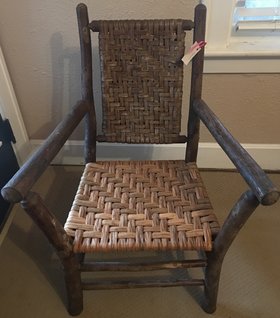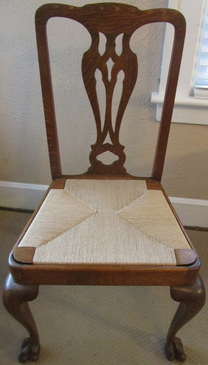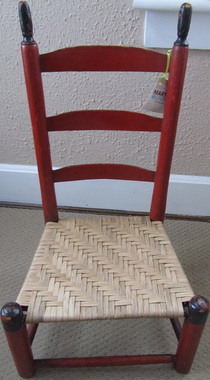Restorations Offered
All weaving has a lifespan and will eventually need replaced- weaving maintenance is part of the ownership of woven furniture. I do not do patch or strand repairs- only full panel replacements. I only offer what is best structurally for the longevity and use of the chair/item.
The following is a quick overview of weaving techniques I offer. Click on the links for more information. Enjoy!
The following is a quick overview of weaving techniques I offer. Click on the links for more information. Enjoy!
Hand Caning
Hand Caning is woven strand by strand all by hand attaches to the wood by holes drilled through the wood. It is the original and oldest of all caning techniques, dating back centuries.
Traditional and all specialty weaves offered. For more information about Hand Caning CLICK HERE Other variations: French and Double Hand Caning |
Sheet Caning
Like the name suggests, the cane comes pre-woven in sheets. It is also called "pressed" cane because of the way it is installed- by pressing the sheet of cane into the grove in the wood.
For more information about Sheet Caning CLICK HERE |
Sheet Cane Variations
Sheet Caning is offered in many alternative patterns to the traditional weave.
For more information about Sheet Cane Variations CLICK HERE |
Shaker Tape
Chair seats or backs woven with flat, uniform cotton tape available in many colors and offered in a number of patterns.
For more information about Shaker Tape CLICK HERE |
***For the following only - Due to an extensive back log of orders I am not presently able to reply or quote on new Cane Binding, Special Projects, Danish Cord, or Hickory projects. My wait list for these techniques is currently closed. ***
Cane BindingCane Binding refers to a technique of caning that is specific to tightness of the cane weave and the way the cane attaches to the wood - by wrapping around rungs. The cane is tightly woven in a herringbone, New England porch rocker, basketweave, or other patterns; strand by strand all by hand. This is an excellent choice for chair backs as both sides can be beautiful and finished.
For more information about Cane Binding CLICK HERE |
Special Project Caning
Unorthodox, if you will, applications of Cane.
For more information about Special Project Caning CLICK HERE |
Danish Peel
Unique caning weaves on Midcentury and Danish Modern pieces. Most weaves are unique to each chair.
For more information about Danish Peel CLICK HERE |
Danish CordDanish paper cord is the material used to weave typical seats and backs found in many Danish and Mid Century Modern furniture designs. It is a strong 3-ply fiber product and the weaving typically incorporates wrapping, rushing style weaving, and basket weave patterns. It gained popularity starting after World War II in Denmark and other European countries.
For more information about Danish Cord CLICK HERE |
Hickory
Chair or stools woven with traditionally hand harvested Hickory Bark from Tennessee. It is irregular in width and color and delightfully rustic.
For more information about Hickory CLICK HERE |
No Longer Offered
RushingOriginally, rushing referred to the natural rush material used to weave seats and backs out of hand harvested and hand rolled straw-like strand- typically harvested cat tail leaves. Today, rushing is a term used for the specific technique of weaving continuous rope around rungs or frames to create solid seats and backs with a pattern that resembles triangles meeting in the middle- regardless of material used.
For more information about Rushing CLICK HERE As of 2016 no longer offered due to the physical toll it takes on the body. |
SplintChair seats or backs woven with wide, flat slats around rungs in a herringbone or basket weave pattern. It is often seen on porch rockers and ladder back chairs. This is a great option for chair backs since the reverse side can be as finished at the front and does not show any knots or staples.
For more information about Splint CLICK HERE As of 2020 no longer offered due to continued poor material quality. |
